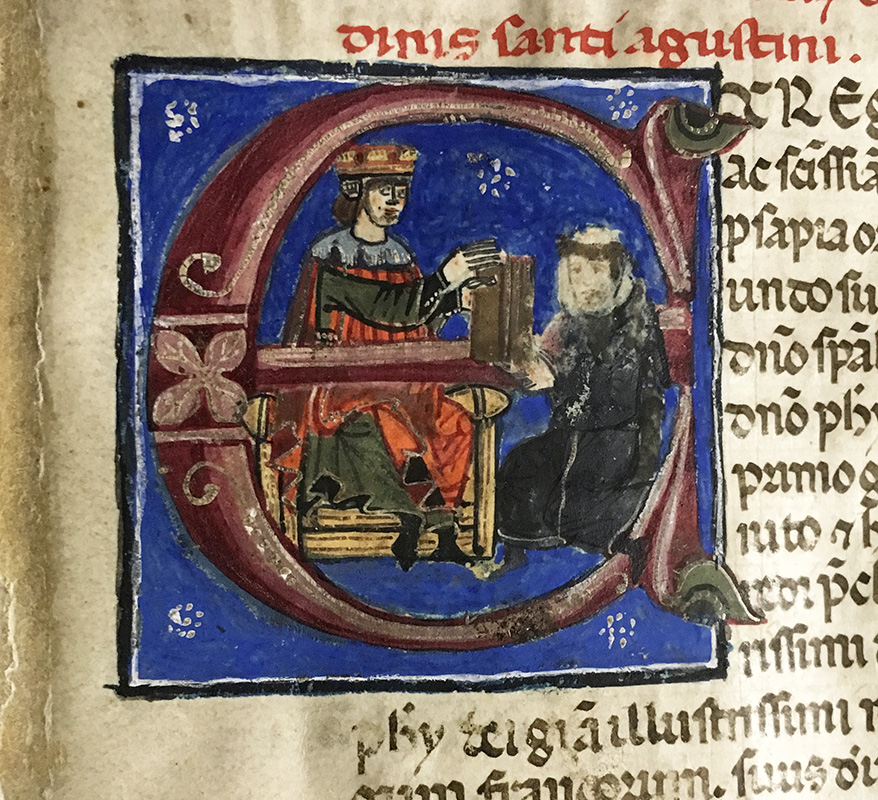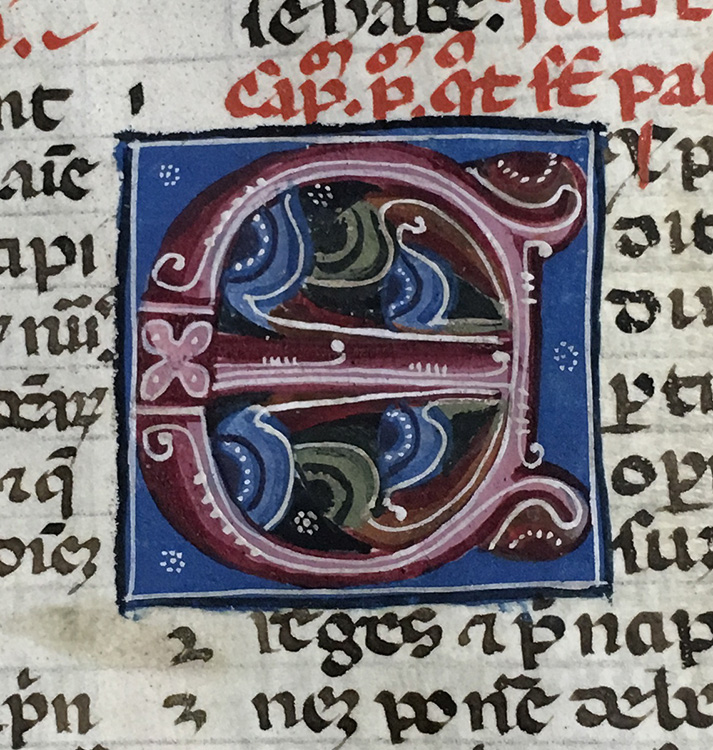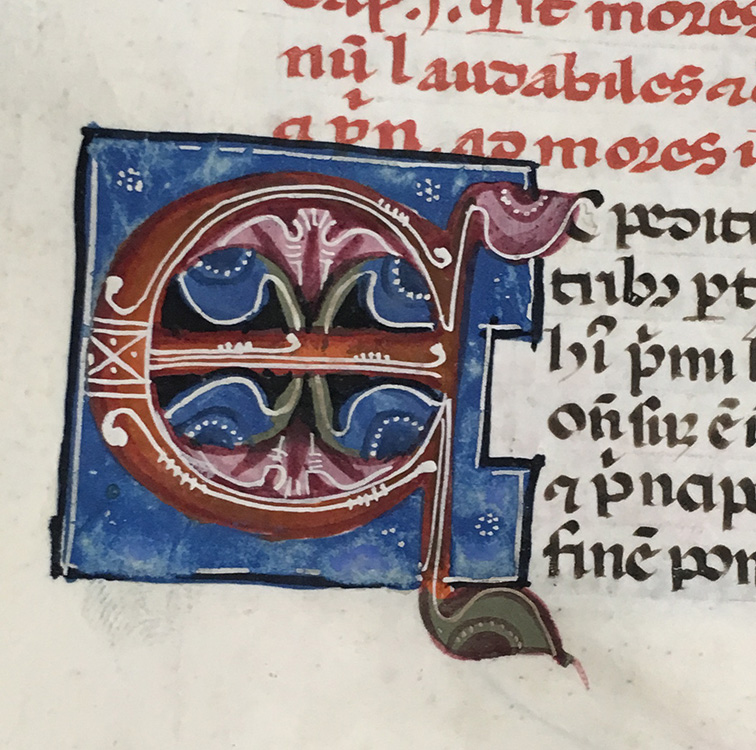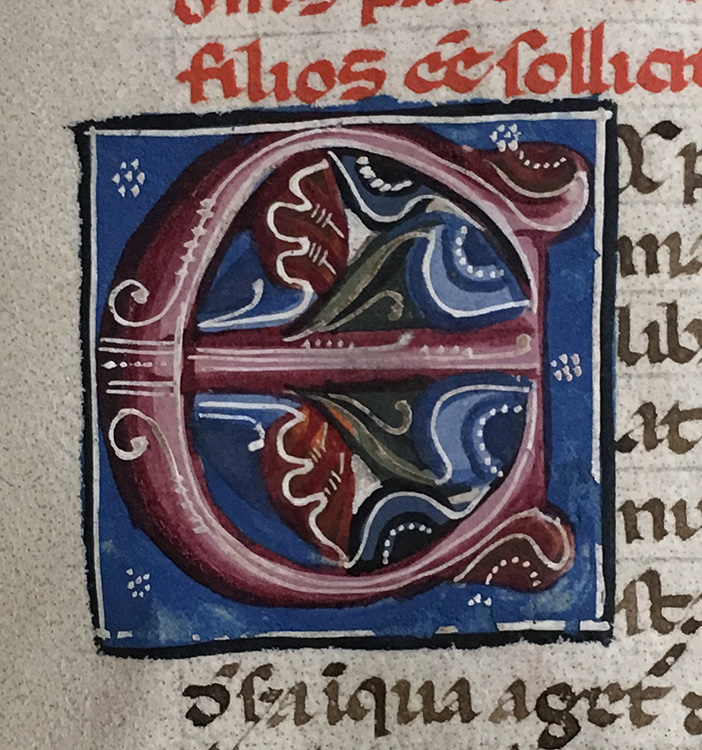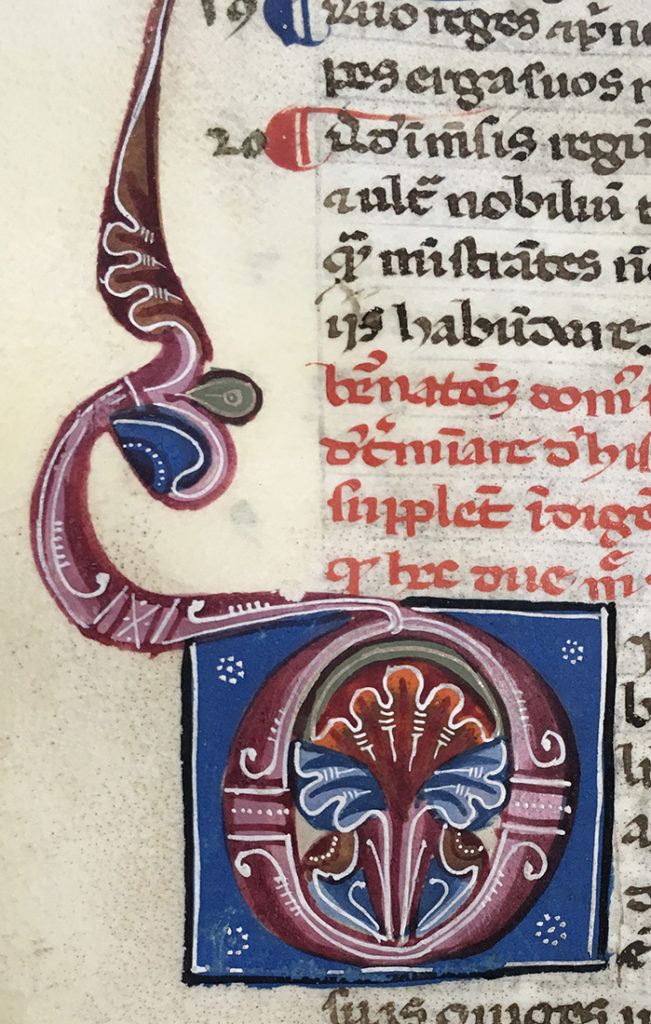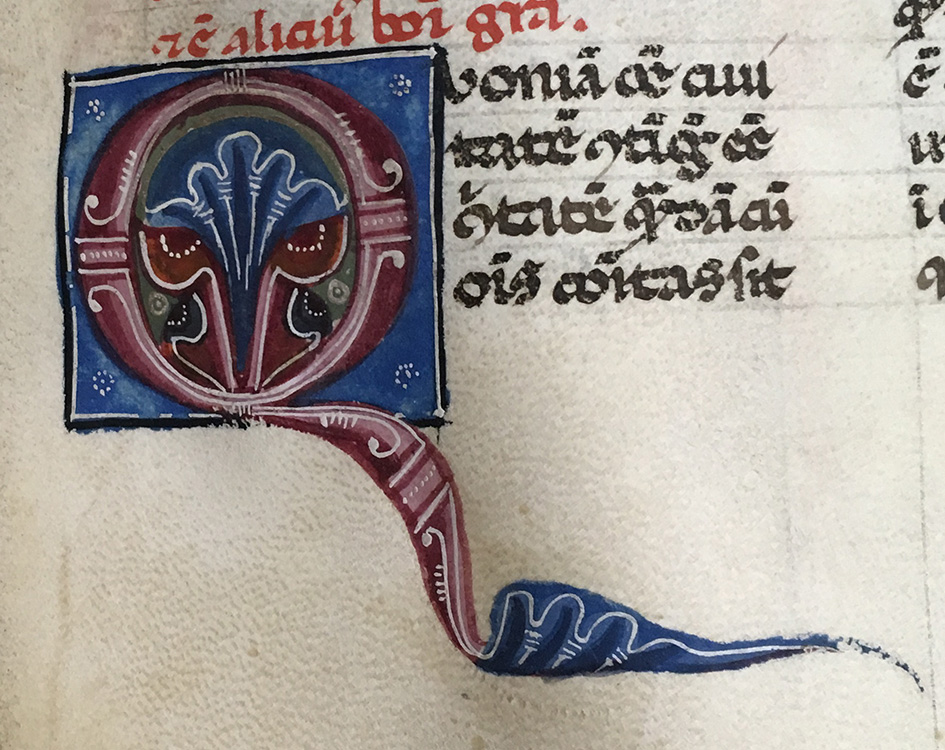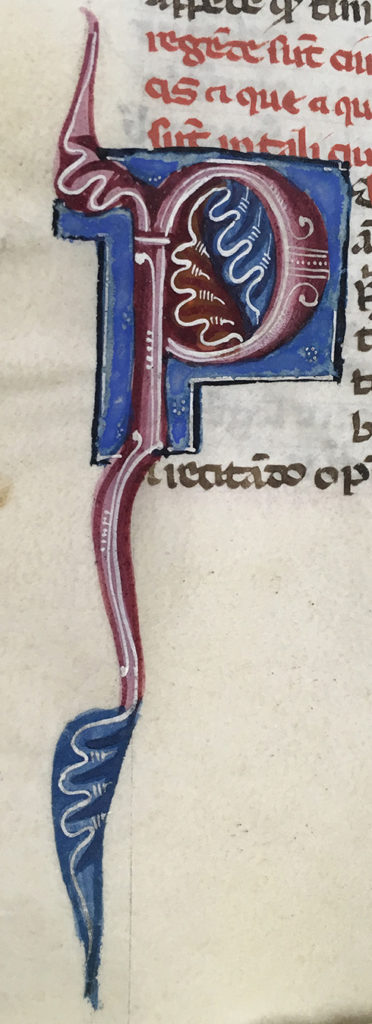I have written several posts regrading initials in medieval manuscripts (here, here, here, and here), and here’s yet another. This week it’s about historiated initials, the most elaborate initials one can find in manuscripts. Historiated initials are letters which contain “an identifiable scene or figures, sometimes relating to the text.”
